Yamadera Report
by japan-guide.com
This is the official japan-guide.com autumn color report for 2010. Please visit also our guide to autumn leaves for more general information and our schedule of upcoming reports.
| previous post |
| next post |
2010/11/05 - Yamadera Report
by francois
Yamadera is a temple in the mountains whose name literally means mountain temple. Located just outside of Yamagata City, the temple was my destination for today's autumn color report. Yamadera can also be reached by traveling via Sendai, which was the route I took today.
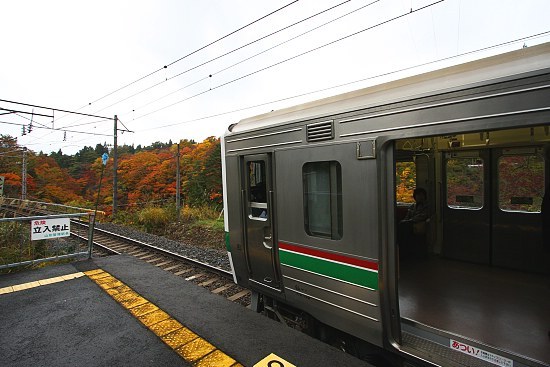
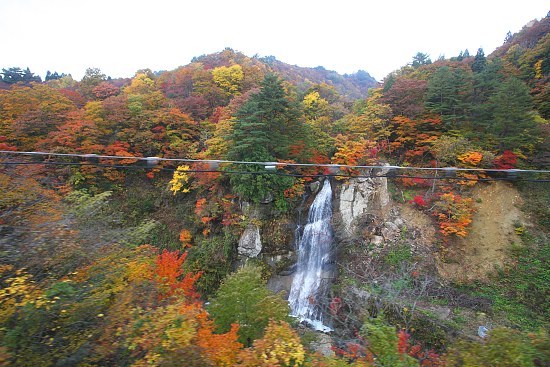
From Sendai I took the JR Senzan Line which connects Sendai and Yamagata City, and it took about an hour to get to Yamadera. Along the way I was happy to see a large amount of fall colors, which made we feel quite hopeful about the state of the trees at Yamadera. One small setback was that as the train started to approach the area around Yamadera the blue skies began to turn grey and the weather became quite overcast.
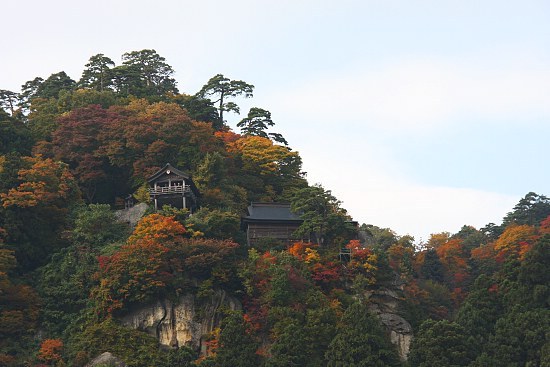
Immediately upon disembarking the train at Yamadera Station a few of the temple buildings were visible on the mountainside from the platform. They were surrounded by a fair amount of color, so I was looking forward to beginning my hike. The various pamphlets and information center estimated the ascent to take about 30 minutes, which was around the amount of time I took.
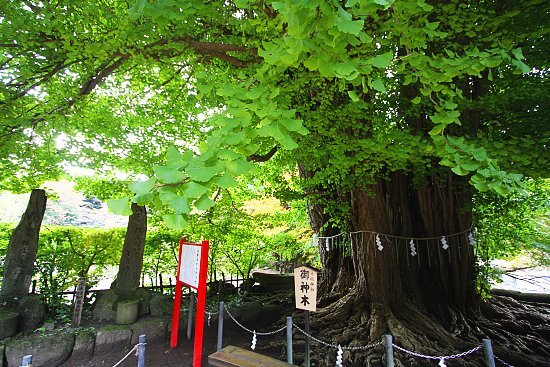
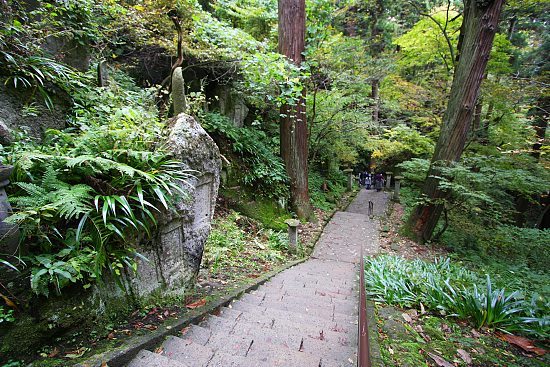
Although there were many temple buildings to see in the lower regions of the temple grounds, there was very little in terms of koyo. The lower mountainside was also very green, so both should continue to improve in terms of color over the next week. However, with the exception of a few trees, the lower regions did not seem as if they would be particularly remarkable as koyo destinations.
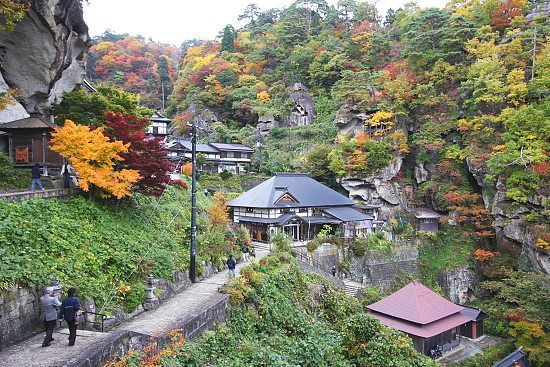
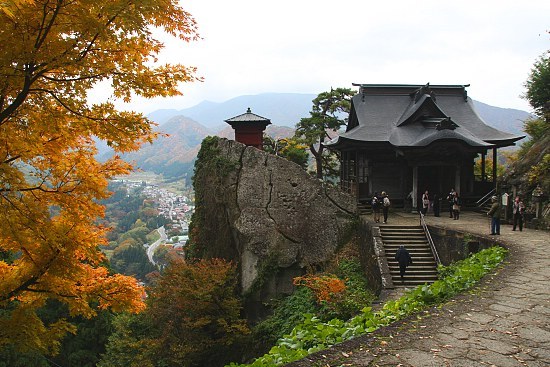
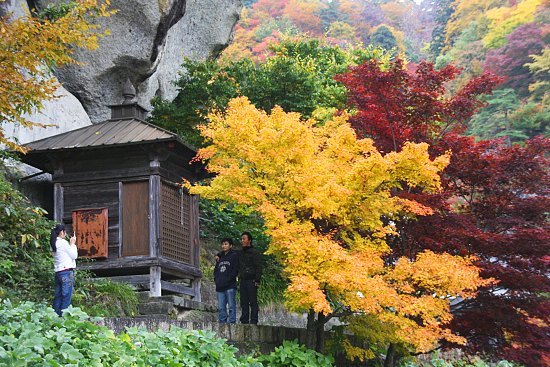
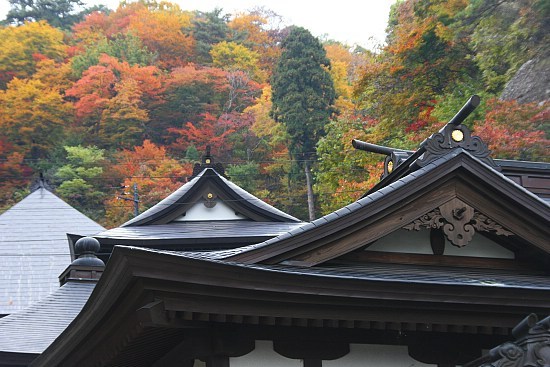
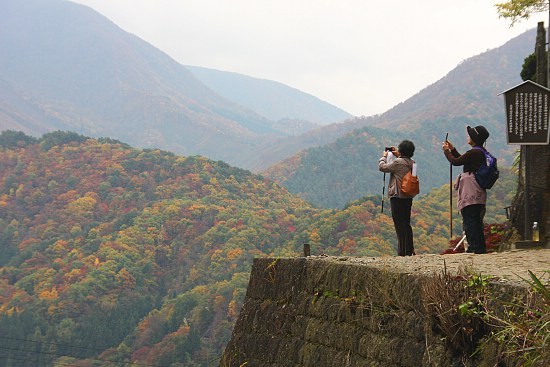
After arriving at the Niomon Gate visitors will enter the main cluster of temple buildings in Yamadera's upper region. This area has a large number of colorful trees and offers fantastic views of the area below and the neighboring mountsides. Travelers looking for fall colors will surely not be dissapinted after arriving at the top of Yamadera. However, a few of the shop keepers commented that this year has not been as vibrant as previous years.
It seems as if this area is suffering from the same condition that Schauwecker and Scott have already noticed this year during other reporting trips on Honshu. This year's exceptionally hot summer has had an adverse effect on the color of the fall leaves. Nonetheless, today I was still able to very much enjoy the combination of the temple atmosphere and the autumnal scenery.
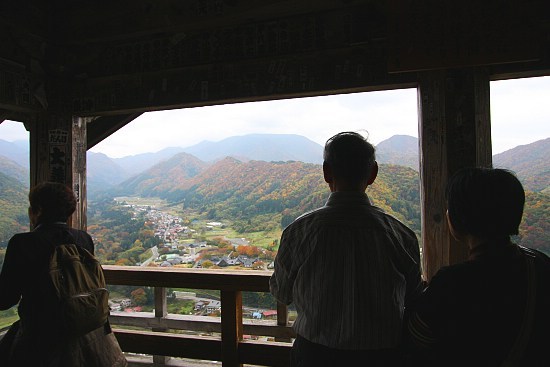
At the very top of the temple grounds is the Godaido observation deck, which is the best spot for a view of the surrounding area. After my hike back down the mountain I noticed that the uppermost building that I had seen from the station platform had been the Godaido. As I looked at the observation deck later in the day I was amused to occassionally see the flashes of cameras goind of now that the area had become busier.
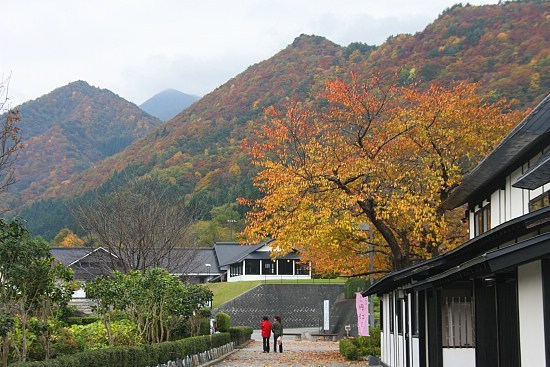
Although the best spot for koyo is certainly at the top of Yamadera, I was also able to find some nice examples of color in the Fuga no Kuni which is located in the opposite direction from the station as Yamadera. The area has a museum dedicated to the famous Japanese poet Basho and another that focuses on Western art. There are also nice craft shops and restaurants that would be able to amuse visitors who decide to stay in the area longer.
Although I was not able to see it personally, I found out that Yamadera is having evening illumintaions for the fall colors that began on October 24 and will finish this Sunday on November 7. The light up can be seen from 18:00 to 21:00 in the evenings.
| previous post |
| next post |
|
List of Posts:
2010/12/09 - Tokyo Report 2010/12/06 - Kamakura Report 2010/12/01 - Kyoto Report 2010/11/30 - Tokyo Report 2010/10/27 - Kuju Report 2010/09/29 - Oze Report |
Questions? Ask in our forum.